-
 Bitcoin
Bitcoin $81,673.2634
8.27% -
 Ethereum
Ethereum $1,612.3637
13.83% -
 Tether USDt
Tether USDt $0.9993
0.00% -
 XRP
XRP $1.9880
13.70% -
 BNB
BNB $574.9372
5.64% -
 USDC
USDC $0.9997
-0.05% -
 Solana
Solana $115.3990
12.03% -
 Dogecoin
Dogecoin $0.1544
11.00% -
 TRON
TRON $0.2374
4.29% -
 Cardano
Cardano $0.6100
10.67% -
 UNUS SED LEO
UNUS SED LEO $9.3850
2.63% -
 Chainlink
Chainlink $12.2345
14.64% -
 Toncoin
Toncoin $3.0310
2.34% -
 Avalanche
Avalanche $17.9170
11.78% -
 Stellar
Stellar $0.2338
7.82% -
 Sui
Sui $2.1485
13.82% -
 Hedera
Hedera $0.1649
14.59% -
 Shiba Inu
Shiba Inu $0.0...01168
11.27% -
 MANTRA
MANTRA $6.7403
8.00% -
 Bitcoin Cash
Bitcoin Cash $295.7484
10.91% -
 Litecoin
Litecoin $74.1675
8.10% -
 Polkadot
Polkadot $3.5261
5.27% -
 Dai
Dai $1.0000
-0.02% -
 Bitget Token
Bitget Token $4.2700
4.04% -
 Ethena USDe
Ethena USDe $0.9989
0.02% -
 Hyperliquid
Hyperliquid $13.4067
13.98% -
 Pi
Pi $0.5927
7.30% -
 Monero
Monero $201.9325
3.40% -
 Uniswap
Uniswap $5.2271
12.26% -
 OKB
OKB $52.6907
4.76%
Analysis of key indicators of cryptocurrency K-line charts
Candlestick charts are vital for crypto trading, showing price movements and market sentiment; key indicators like volume, MA, RSI, MACD, and Bollinger Bands aid analysis.
Mar 31, 2025 at 01:21 pm
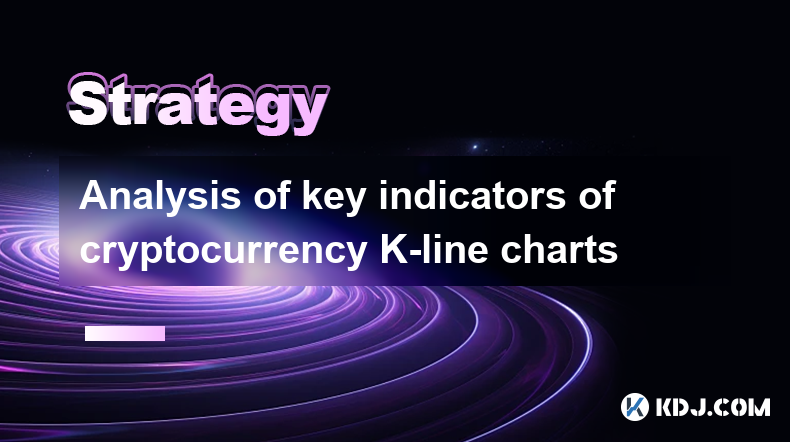
Understanding Candlestick Charts in Cryptocurrency Trading
Cryptocurrency trading heavily relies on technical analysis, with K-line charts (candlestick charts) being a fundamental tool. These charts visually represent price movements over a specific period, providing insights into market sentiment and potential future price action. Understanding how to interpret these charts and the key indicators derived from them is crucial for successful trading. This article will delve into the key indicators used in analyzing cryptocurrency K-line charts.
Deciphering the Candlestick: Open, High, Low, Close
Each candlestick represents a specific time period (e.g., 1-hour, 4-hour, daily). The body of the candlestick shows the difference between the opening and closing prices. A green candlestick indicates a closing price higher than the opening price (bullish), while a red candlestick shows a closing price lower than the opening price (bearish). The wicks (shadows) extending above and below the body represent the high and low prices reached during that period.
Volume: The Fuel Behind the Price Movement
Volume is a critical indicator often overlooked. It represents the total number of traded units during a specific period. High volume accompanying a strong price movement confirms the strength of the trend. Conversely, low volume during a price surge might suggest a weak trend prone to reversal. Analyzing volume alongside price action helps confirm the validity of price signals. High volume confirms trends; low volume suggests weakness.
Moving Averages: Smoothing Out the Noise
Moving averages (MAs) are used to smooth out price fluctuations and identify trends. Common types include Simple Moving Average (SMA), Exponential Moving Average (EMA), and Weighted Moving Average (WMA). Traders often use multiple MAs with different time periods (e.g., 50-day MA and 200-day MA) to identify support and resistance levels and potential crossovers which can signal buy or sell opportunities. MA crossovers can indicate trend changes.
Relative Strength Index (RSI): Gauging Momentum
RSI is a momentum oscillator that measures the speed and change of price movements. It ranges from 0 to 100. Readings above 70 generally indicate overbought conditions (potential for price correction), while readings below 30 suggest oversold conditions (potential for price rebound). RSI divergences, where price makes a new high but RSI fails to, can also signal potential trend reversals. RSI helps identify overbought and oversold conditions.
MACD (Moving Average Convergence Divergence): Identifying Trend Changes
MACD is a trend-following momentum indicator that compares two moving averages. It consists of a MACD line and a signal line. Buy signals often occur when the MACD line crosses above the signal line, while sell signals occur when it crosses below. MACD divergence, similar to RSI divergence, can also provide valuable insights into potential trend reversals. MACD line crossovers can signal buy/sell opportunities.
Bollinger Bands: Measuring Volatility
Bollinger Bands consist of three lines: a simple moving average (typically 20-period) and two standard deviation bands above and below the moving average. They measure volatility and can help identify potential overbought or oversold conditions. Price bouncing off the upper or lower bands can signal potential reversals. Bollinger Bands show volatility and potential reversal points.
Support and Resistance Levels: Key Price Zones
Support levels are price points where buying pressure is strong enough to prevent further price declines. Resistance levels are price points where selling pressure is strong enough to prevent further price increases. These levels are often identified by observing previous price highs and lows on the chart. Breakouts above resistance or below support can signal significant price movements. Breakouts above resistance or below support can signal strong trends.
Fibonacci Retracement: Identifying Potential Reversal Points
Fibonacci retracement levels are based on the Fibonacci sequence (0, 1, 1, 2, 3, 5, 8, etc.). These levels (23.6%, 38.2%, 50%, 61.8%, 78.6%) are often used to identify potential support and resistance levels during price corrections. Price bouncing off these levels can signal potential trend continuations or reversals. Fibonacci retracements help identify potential support/resistance.
Combining Indicators for Comprehensive Analysis
Using multiple indicators together provides a more comprehensive analysis than relying on a single indicator. For example, combining RSI, MACD, and Bollinger Bands can help confirm trend direction and identify potential entry and exit points. However, remember that no indicator is perfect, and false signals can occur. Always use risk management techniques to protect your capital.
Frequently Asked Questions
Q: What is the best indicator for cryptocurrency trading?
A: There is no single "best" indicator. The effectiveness of an indicator depends on various factors, including the cryptocurrency, timeframe, and market conditions. Successful traders often use a combination of indicators to confirm signals.
Q: How do I identify support and resistance levels on a K-line chart?
A: Support levels are typically identified by previous price lows where buying pressure prevented further declines. Resistance levels are identified by previous price highs where selling pressure prevented further increases. Look for areas where the price has bounced off multiple times.
Q: What are candlestick patterns?
A: Candlestick patterns are specific combinations of candlesticks that can suggest potential price movements. Examples include bullish engulfing patterns, bearish engulfing patterns, hammer patterns, and shooting star patterns. Understanding these patterns can improve your ability to predict price movements.
Q: How do I use moving averages effectively?
A: Moving averages smooth out price fluctuations and help identify trends. Traders often use multiple MAs with different time periods to confirm trends and identify potential crossovers which can signal buy or sell opportunities. Experiment with different MA combinations to find what works best for your trading style.
Q: What is the difference between SMA and EMA?
A: SMA (Simple Moving Average) gives equal weight to all data points within the period, while EMA (Exponential Moving Average) gives more weight to recent data points. EMA is generally more responsive to recent price changes than SMA. The choice between SMA and EMA depends on your trading style and preferences.
Q: Are indicators enough for successful cryptocurrency trading?
A: No. Indicators provide valuable insights, but they are not a guarantee of success. Successful cryptocurrency trading requires a combination of technical analysis, fundamental analysis, risk management, and discipline. Always manage your risk appropriately and never invest more than you can afford to lose.
Disclaimer:info@kdj.com
The information provided is not trading advice. kdj.com does not assume any responsibility for any investments made based on the information provided in this article. Cryptocurrencies are highly volatile and it is highly recommended that you invest with caution after thorough research!
If you believe that the content used on this website infringes your copyright, please contact us immediately (info@kdj.com) and we will delete it promptly.
- Pi Network (PICOIN) price is down by 71% from its all-time high near $3, and crypto traders are now wondering whether this altcoin is still a good investment.
- 2025-04-10 11:25:14
- Bitcoin (BTC) Price Remains Above $87,000 as Market Awaits U.S. Data Releases
- 2025-04-10 11:25:14
- BlackRock Launches Bitcoin ETP (Tracking Bitcoin) in Europe
- 2025-04-10 11:20:15
- Immutable Games (IMX) Has Officially Dropped Its Investigations by the Securities and Exchange Commission (SEC)
- 2025-04-10 11:20:15
- BNB Price Eyes Key Upside Break
- 2025-04-10 11:20:13
- Top Beginner-Friendly Crypto Apps: Ka.app, Uphold, eToro
- 2025-04-10 11:20:13
Related knowledge
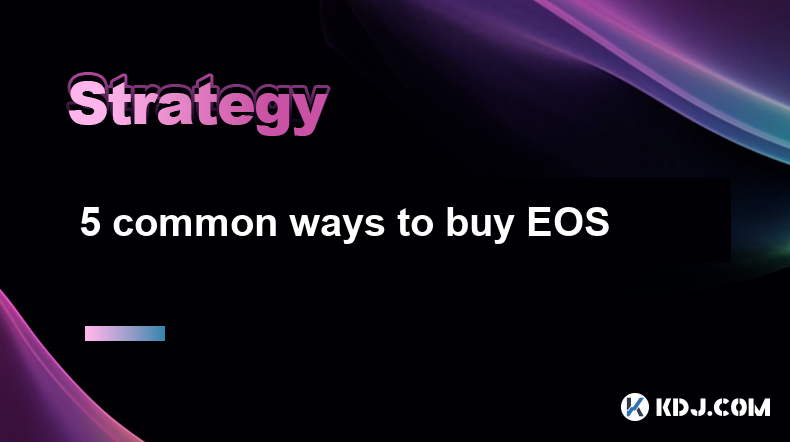
5 common ways to buy EOS
Apr 10,2025 at 01:14am
When it comes to purchasing EOS, one of the prominent cryptocurrencies in the blockchain ecosystem, there are several methods you can use. Each method has its own set of advantages and considerations. In this article, we will explore five common ways to buy EOS, providing a detailed guide on how to navigate each option effectively. Using Cryptocurrency ...
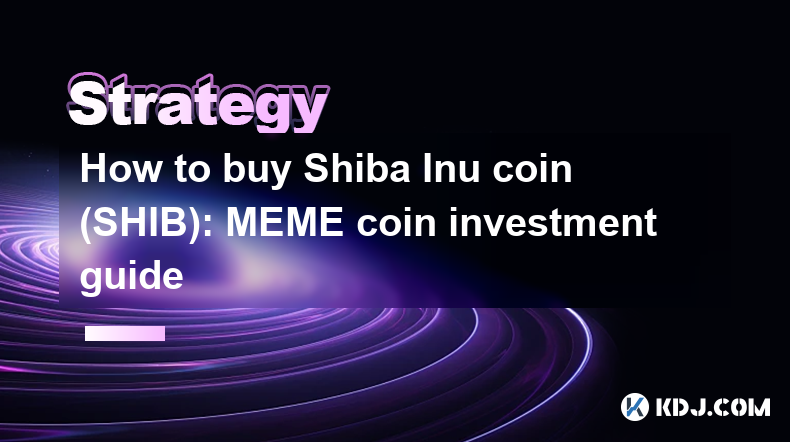
How to buy Shiba Inu coin (SHIB): MEME coin investment guide
Apr 10,2025 at 07:42am
Buying Shiba Inu coin (SHIB), a popular meme coin, can be an exciting venture into the world of cryptocurrency. This guide will walk you through the steps to purchase SHIB, provide insights into the coin's background, and offer tips on managing your investment. Whether you're a seasoned crypto investor or a newcomer, understanding how to buy and manage ...
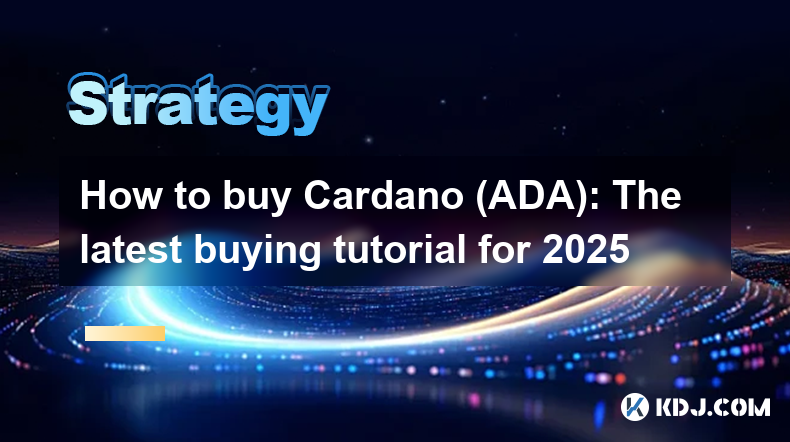
How to buy Cardano (ADA): The latest buying tutorial for 2025
Apr 09,2025 at 01:21am
Introduction to Cardano (ADA)Cardano (ADA) is a blockchain platform that aims to provide a more secure and scalable infrastructure for the development of decentralized applications and smart contracts. Created by Charles Hoskinson, one of the co-founders of Ethereum, Cardano differentiates itself through its rigorous academic approach and peer-reviewed ...
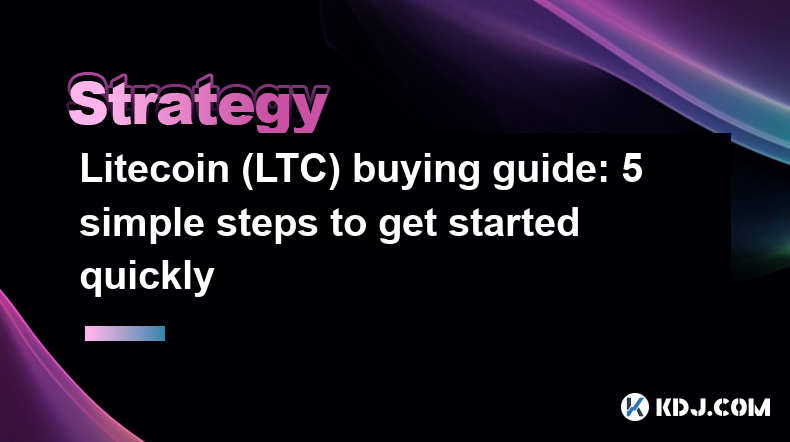
Litecoin (LTC) buying guide: 5 simple steps to get started quickly
Apr 09,2025 at 07:21pm
Litecoin (LTC) is a popular cryptocurrency that was created as a fork of Bitcoin. It offers faster transaction times and lower fees, making it an attractive option for many users. If you're interested in buying Litecoin, this guide will walk you through the process in five simple steps. Let's get started. Step 1: Choose a Reliable Cryptocurrency Exchang...
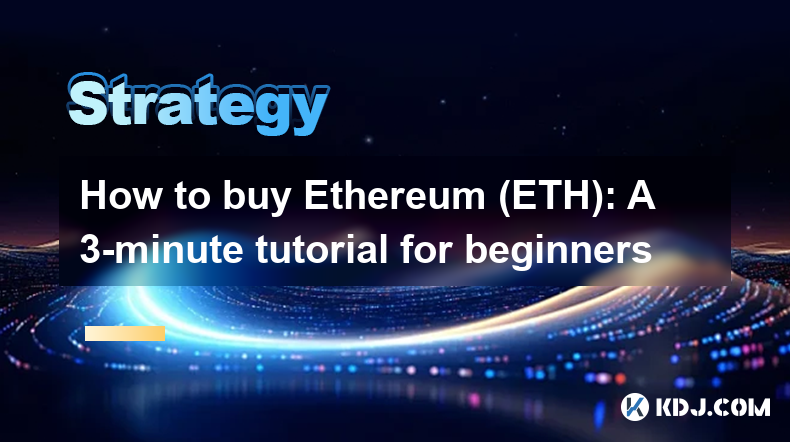
How to buy Ethereum (ETH): A 3-minute tutorial for beginners
Apr 10,2025 at 03:01am
Buying Ethereum (ETH) can be an exciting first step into the world of cryptocurrencies. This tutorial is designed to guide beginners through the process in just three minutes, ensuring you can start your crypto journey with confidence. Let's dive into the steps you need to follow to purchase Ethereum. Choosing a Cryptocurrency ExchangeThe first step in ...
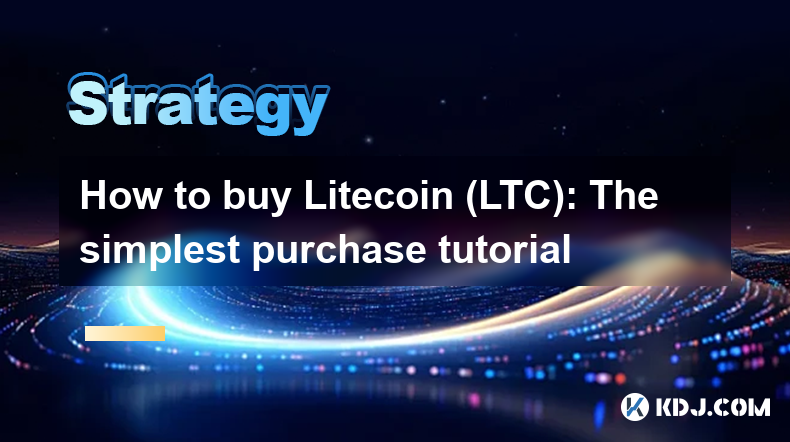
How to buy Litecoin (LTC): The simplest purchase tutorial
Apr 10,2025 at 05:42am
Buying Litecoin (LTC) can be a straightforward process if you follow the right steps. Litecoin, often referred to as the silver to Bitcoin's gold, is a popular cryptocurrency that can be purchased on various exchanges. In this tutorial, we will guide you through the simplest way to buy Litecoin, ensuring you understand each step thoroughly. Choosing a C...

5 common ways to buy EOS
Apr 10,2025 at 01:14am
When it comes to purchasing EOS, one of the prominent cryptocurrencies in the blockchain ecosystem, there are several methods you can use. Each method has its own set of advantages and considerations. In this article, we will explore five common ways to buy EOS, providing a detailed guide on how to navigate each option effectively. Using Cryptocurrency ...

How to buy Shiba Inu coin (SHIB): MEME coin investment guide
Apr 10,2025 at 07:42am
Buying Shiba Inu coin (SHIB), a popular meme coin, can be an exciting venture into the world of cryptocurrency. This guide will walk you through the steps to purchase SHIB, provide insights into the coin's background, and offer tips on managing your investment. Whether you're a seasoned crypto investor or a newcomer, understanding how to buy and manage ...

How to buy Cardano (ADA): The latest buying tutorial for 2025
Apr 09,2025 at 01:21am
Introduction to Cardano (ADA)Cardano (ADA) is a blockchain platform that aims to provide a more secure and scalable infrastructure for the development of decentralized applications and smart contracts. Created by Charles Hoskinson, one of the co-founders of Ethereum, Cardano differentiates itself through its rigorous academic approach and peer-reviewed ...

Litecoin (LTC) buying guide: 5 simple steps to get started quickly
Apr 09,2025 at 07:21pm
Litecoin (LTC) is a popular cryptocurrency that was created as a fork of Bitcoin. It offers faster transaction times and lower fees, making it an attractive option for many users. If you're interested in buying Litecoin, this guide will walk you through the process in five simple steps. Let's get started. Step 1: Choose a Reliable Cryptocurrency Exchang...

How to buy Ethereum (ETH): A 3-minute tutorial for beginners
Apr 10,2025 at 03:01am
Buying Ethereum (ETH) can be an exciting first step into the world of cryptocurrencies. This tutorial is designed to guide beginners through the process in just three minutes, ensuring you can start your crypto journey with confidence. Let's dive into the steps you need to follow to purchase Ethereum. Choosing a Cryptocurrency ExchangeThe first step in ...

How to buy Litecoin (LTC): The simplest purchase tutorial
Apr 10,2025 at 05:42am
Buying Litecoin (LTC) can be a straightforward process if you follow the right steps. Litecoin, often referred to as the silver to Bitcoin's gold, is a popular cryptocurrency that can be purchased on various exchanges. In this tutorial, we will guide you through the simplest way to buy Litecoin, ensuring you understand each step thoroughly. Choosing a C...
See all articles




















































































